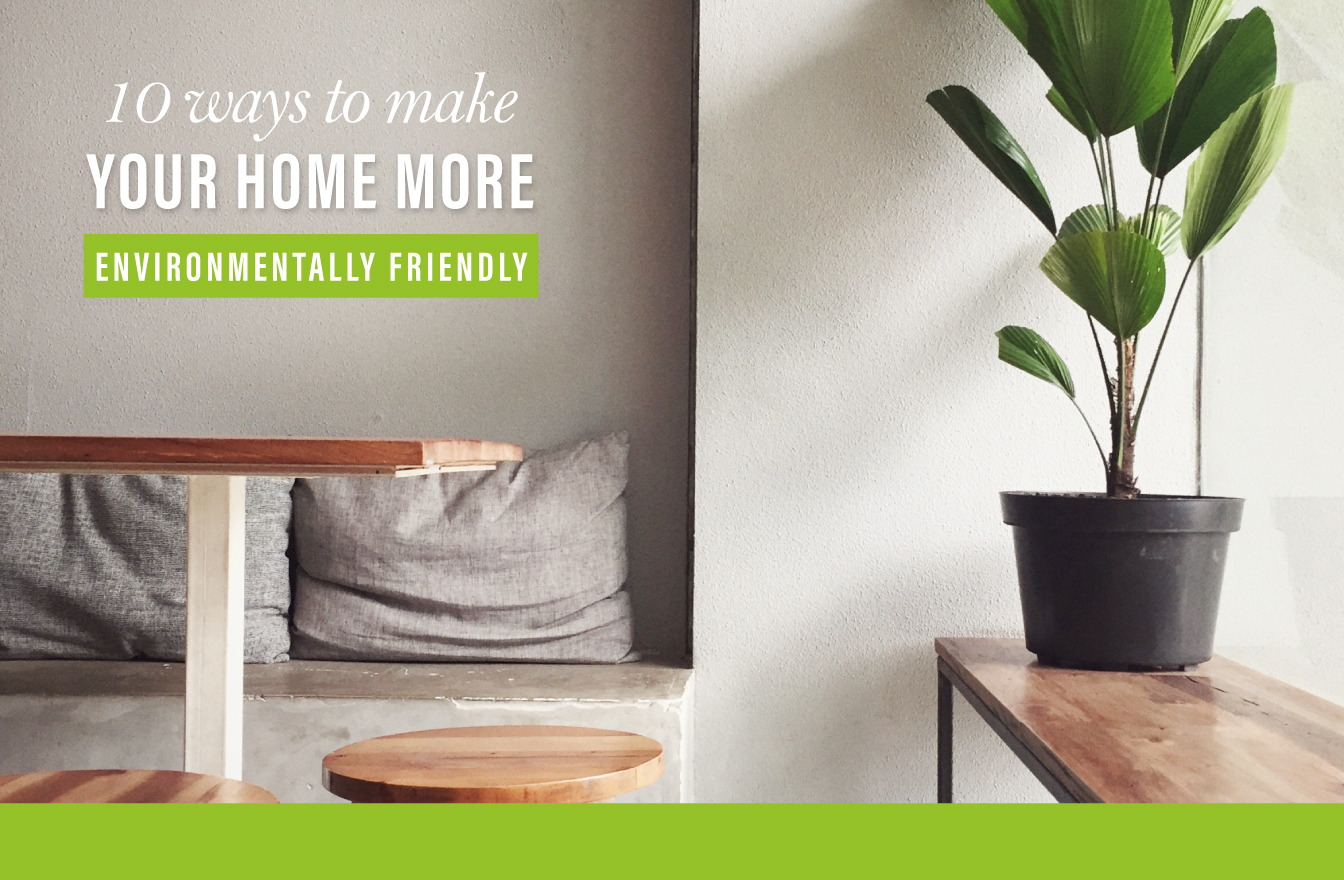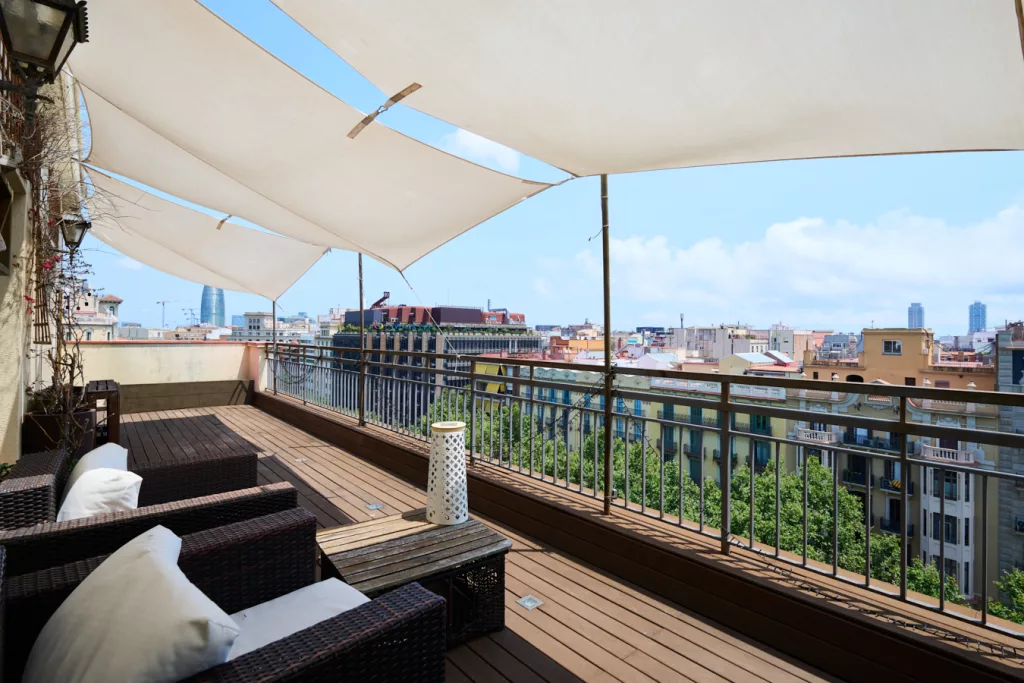
Our home is where we spend a lot of our time, even more so in the last 18 months or so, so it makes sense to start your own eco-movement right there.
Yet, there is still insufficient support and funding from the country’s political parties and regulatory bodies to implement more environmentally-friendly initiatives, as well as a lack of awareness among many citizens. Real change will only take place when companies step up and take responsibility but there are many things that individuals can do to help the environment, starting in their homes.
Do you want to know the value of your flat or house from our valuation page? Access below from the following link:
We value your flat or house in Barcelona
Tips for greener homes
Here are our top 10 tips for making our homes more eco-friendly:
1. Reduce, Reuse, Recycle, Upcycle
We all consume and use far too much. We need to put more thought into what we are buying and why. The questions we need to ask are: Do I really need this? Will I use this? What purpose does this really serve? When we buy mindfully, we buy less, which not only saves money but also saves harmful CO2 emissions when packaging gets thrown out. Old T-shirts and towels can be reused as rags – much better than paper towels.
Use reusable tote or hemp bags instead of plastic bags and reuse food bags where possible. Food containers can be reused, get refillable water bottles instead of plastic ones (which can take over 1,000 years to biodegrade), use rechargeable batteries instead of single-use batteries and don’t forget to use recycled paper for toilet paper, writing paper or wrapping paper. And when you’ve reduced and reused as much as you can, then you can recycle.
2. Grow your own
Where you can, grow your own plants and vegetables. Having plants around your home not only helps produce more oxygen and absorb Carbon Dioxide, they also look good! If you have a garden or terrace, make space to grow your own vegetables.
Try using a planter box or elevated bed which are sold at most garden centres or on Amazon. Tomatoes grow really well as do salad leaves, cucumbers, garlic, pumpkin, potatoes, runner beans and most herbs. If you don`t have any outside space, you could invest in a countertop garden – these have LED lights for light and warmth and give alerts about plant care.
Do you want to sell your property in Barcelona? Access now to our specific page for owners:
Sell your flat in Barcelona
3. Make your own cleaning products
Most cleaning products are sold in plastic containers and have a lot of toxic chemicals. When you make your own cleaning products, you know exactly what goes into them and you also can reuse the containers. A couple of simple examples are:
-Window cleaner:1/4 cup of white vinegar, 2 cups of warm water and tea tree oil
-Multi-use cleaner: 1/4 cup of white vinegar, 1 tbsp of baking soda and 1 litre of hot water
-Room spray: 2 cups of warm water and an essential oil of your choice
These can all be kept in a non-toxic glass cleaner set of spray bottles. Also, choose non-synthetic ingredients when shopping for shampoo and shower gel. As these bottles will ultimately be treated the same as other plastic objects, you can opt for soap bars that are suitable for hair and body and are biodegradable.
4. Save water
A simple tip to save water is to put a bucket under the shower or a jug under the kitchen tap whilst the water is heating up. Then, you can use that water for your plants. You will save both water and money. Showers tend to use less water than baths (if it is a quick shower). When you wash your clothes, try to make it as big a load and as cool as possible, so you don’t have to use as much water or energy. You could also switch to ‘lo-flo’ for toilets and showers which use less water but pressure-wise is the same. You might also want to think about investing in a greywater system which filters the water that comes from your washing machine and shower/bath so it can be reclaimed and reused, mainly for the garden.
5. Unplug your sockets and turn off the lights
If you are not using something, switch it off, and unplug it from the wall. Even if it is switched off at the wall, it still uses energy while it is plugged in. If you don’t feel like pulling every lamp and charger out when you leave the house, you could use a power strip instead which leaves you with just a single thing to unplug. And, if you’re too lazy to physically turn off the light switch, you can always invest in a Smart light system that responds to audio commands.
6. Switch your heating source
Opting for a renewable method for heating your home can save massively on carbon emissions. Boilers can be fuelled by four different fuels – gas, oil, electric or biomass. Heat pumps are more environmentally-friendly due to their low energy consumption and they also eliminate the need for gas pipes and oil tanks. If possible, installing solar panels is a much more environmentally-friendly and cleaner energy source. A Smart thermostat will also help regulate heating. Insulate your windows and walls and use draft excluders under your door, to help keep heat in for longer.
7. Sell, donate or upcycle old furniture and homeware
One person’s trash is another person’s treasure. When an old piece of furniture is falling apart it is often tempting to throw it away but there will always be someone that can make use of it, even if they have to tear it apart. You can also donate your furniture to a charity shop or sell it online for someone to upcycle it. Just don’t throw it away.
8. Energy-efficient light bulbs
Switching light bulbs to energy-efficient ones can also help reduce carbon emissions. Most light bulbs that are not energy-efficient cannot be recycled, so only change them when they stop working. Light-Emitting Diodes (LEDs) use 75% less energy and last around 25 times longer than regular lighting. They’ll also save you a huge chunk of money on your energy bill.
9. Don’t waste food
We’ve all succumbed to spontaneous buys – tempted by juicy, fresh fruit for example. But you may buy it only for it to remain uneaten a couple of days later. Then it starts to mould and you throw it away. So, next time you buy something fresh, put half of it in the freezer. Also, if you do have to throw (once) fresh food away, compost it instead of throwing it in the bin. Food waste in landfills (which are not aerated) is one of the leading causes of methane, but composting prevents the food’s decomposition and subsequent release of greenhouse gases. Also, it is best to use a tea strainer instead of a teabag as teabags contain microplastics which pollute our waters and are killing thousands of sea creatures. Use compostable coffee pods and use cotton or plant/beeswax wraps for your food instead of plastic wrap or aluminium foil.
10. Invest in low-energy appliances
Electrical appliances account for over 30% of our energy bills. Upgrade to more energy-efficient appliances, including washing machines, refrigerators and freezers that use less electricity. Not only will you be helping with the going green initiatives at home, but you will also end up saving on your utility bills.


 The 10 best luxury penthouses in Barcelona
The 10 best luxury penthouses in Barcelona
 The best luxury clubs in Barcelona
The best luxury clubs in Barcelona
 Luxury nightclubs in Barcelona
Luxury nightclubs in Barcelona
